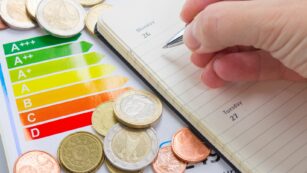Understanding the menstrual cycle isn’t just about tracking periods; it’s about recognizing how hormonal changes influence energy levels. Each phase of the cycle brings its own set of physical and emotional shifts, affecting everything from mood to motivation. Women often notice variations in their energy, but few realize these fluctuations align with their menstrual cycle phases. By tuning into these natural rhythms, they can optimize their activities, workouts, and even social engagements to match their body’s ebb and flow. Dive into the phases of the menstrual cycle and discover how each one uniquely impacts energy levels. These personal stories underscore the practical benefits of syncing lifestyle choices with the menstrual cycle. By paying attention to these natural energy fluctuations, women can enhance their productivity, physical health, and emotional well-being.
Menstrual Cycle Phases Energy Levels
 Understanding how energy levels fluctuate during the menstrual cycle can help women better plan their routines. The menstrual cycle has four main phases: menstrual, follicular, ovulatory, and luteal. Each phase impacts energy levels differently. Monitoring these phases helps in aligning activities with natural energy highs and lows. Understanding the menstrual cycle’s phases and their impact on energy levels can be transformative. Many women have reported improved well-being by aligning their activities with their natural rhythms. For instance, some have found that scheduling high-intensity workouts during the ovulatory phase significantly boosts their performance. Others have shared that gentle exercises and increased rest during the menstrual phase help manage fatigue and mood swings. Case studies also highlight the effectiveness of dietary adjustments. Women incorporating iron-rich foods during menstruation often experience less fatigue, while those who focus on lean proteins during ovulation maintain higher energy levels.
Understanding how energy levels fluctuate during the menstrual cycle can help women better plan their routines. The menstrual cycle has four main phases: menstrual, follicular, ovulatory, and luteal. Each phase impacts energy levels differently. Monitoring these phases helps in aligning activities with natural energy highs and lows. Understanding the menstrual cycle’s phases and their impact on energy levels can be transformative. Many women have reported improved well-being by aligning their activities with their natural rhythms. For instance, some have found that scheduling high-intensity workouts during the ovulatory phase significantly boosts their performance. Others have shared that gentle exercises and increased rest during the menstrual phase help manage fatigue and mood swings. Case studies also highlight the effectiveness of dietary adjustments. Women incorporating iron-rich foods during menstruation often experience less fatigue, while those who focus on lean proteins during ovulation maintain higher energy levels.
Energy Levels During Menstrual Phases
Energy levels fluctuate throughout the menstrual cycle due to hormonal changes. Understanding these fluctuations can help in aligning tasks and activities with natural energy peaks and troughs .During the menstrual phase, energy levels tend to be at their lowest. This phase lasts from day 1 to day 5 of the cycle. As estrogen and progesterone levels decrease, many experience fatigue and mood swings. Low hormone levels may result in a higher demand for rest and relaxation. Including light activities like gentle yoga or walking can help manage energy levels without overexertion. The ovulatory phase sees a significant boost in energy. Occurring around day 14 of the cycle, this phase is marked by a surge in estrogen and luteinizing hormone (LH). High estrogen levels coincide with peak physical performance, making it an ideal time for high-intensity workouts and social engagements. Those in the ovulatory phase often feel more confident and outgoing, benefiting both professional and personal interactions.
tasks and activities with natural energy peaks and troughs .During the menstrual phase, energy levels tend to be at their lowest. This phase lasts from day 1 to day 5 of the cycle. As estrogen and progesterone levels decrease, many experience fatigue and mood swings. Low hormone levels may result in a higher demand for rest and relaxation. Including light activities like gentle yoga or walking can help manage energy levels without overexertion. The ovulatory phase sees a significant boost in energy. Occurring around day 14 of the cycle, this phase is marked by a surge in estrogen and luteinizing hormone (LH). High estrogen levels coincide with peak physical performance, making it an ideal time for high-intensity workouts and social engagements. Those in the ovulatory phase often feel more confident and outgoing, benefiting both professional and personal interactions.
Lifestyle And Energy Management
 Understanding how energy levels fluctuate during the menstrual cycle can help in managing daily activities and maintaining overall well-being. Eating balanced meals can improve energy levels throughout the menstrual cycle. For example, during the menstrual phase, incorporating iron-rich foods like spinach, lentils, and red meat can combat fatigue. Hydration is essential to manage bloating and headaches. In the follicular phase, high-fiber foods like vegetables and whole grains support the digestive system, while healthy fats like avocados and olive oil enhance energy levels. The ovulatory phase benefits from lean proteins such as chicken and fish, which sustain the high energy levels needed for intense workouts and social activities. In the luteal phase, reducing sugar and caffeine intake helps manage premenstrual syndrome (PMS) symptoms like irritability and fatigue. Adjusting exercise routines to align with menstrual cycle phases can optimize energy use. During the menstrual phase, light exercises like gentle yoga, walking, or Pilates retain energy and support relaxation. The follicular phase is suitable for moderately intense activities such as swimming, jogging, or cycling, leveraging rising energy levels. The ovulatory phase, marked by peak energy, is optimal for high-intensity interval training (HIIT), cardio, and strength training. Energy dips in the luteal phase call for moderate exercises like hiking, low-impact aerobics, or tai chi, balancing exertion with relaxation to maintain energy without overtaxing the body.
Understanding how energy levels fluctuate during the menstrual cycle can help in managing daily activities and maintaining overall well-being. Eating balanced meals can improve energy levels throughout the menstrual cycle. For example, during the menstrual phase, incorporating iron-rich foods like spinach, lentils, and red meat can combat fatigue. Hydration is essential to manage bloating and headaches. In the follicular phase, high-fiber foods like vegetables and whole grains support the digestive system, while healthy fats like avocados and olive oil enhance energy levels. The ovulatory phase benefits from lean proteins such as chicken and fish, which sustain the high energy levels needed for intense workouts and social activities. In the luteal phase, reducing sugar and caffeine intake helps manage premenstrual syndrome (PMS) symptoms like irritability and fatigue. Adjusting exercise routines to align with menstrual cycle phases can optimize energy use. During the menstrual phase, light exercises like gentle yoga, walking, or Pilates retain energy and support relaxation. The follicular phase is suitable for moderately intense activities such as swimming, jogging, or cycling, leveraging rising energy levels. The ovulatory phase, marked by peak energy, is optimal for high-intensity interval training (HIIT), cardio, and strength training. Energy dips in the luteal phase call for moderate exercises like hiking, low-impact aerobics, or tai chi, balancing exertion with relaxation to maintain energy without overtaxing the body.

